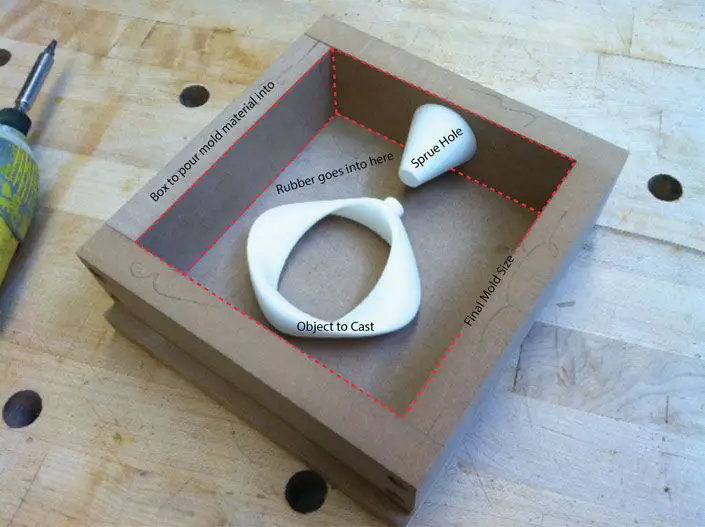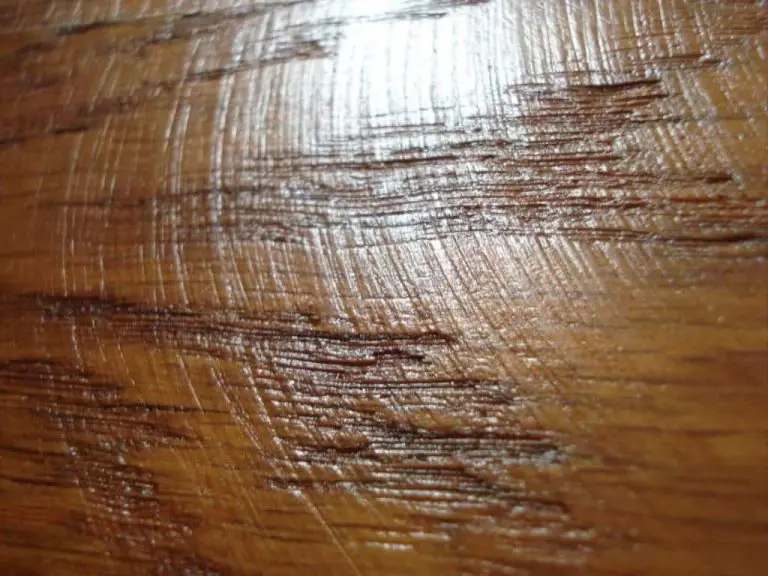How Can We Make The Clay Of Soil?
Clay is a type of fine-grained natural soil material that develops from the gradual chemical weathering of rocks over long periods of time. Clay contains tiny crystalline mineral particles smaller than silt that give it a smooth, sticky consistency when wet. Clay is an important material used in products like pottery, bricks, cement, and ceramics. The unique properties of clay allow it to be shaped and molded while wet, and then dried and baked into a hardened form.
Clay for use in crafts or construction can actually be created from regular soil you collect yourself. With a simple process involving soaking, settling, and separating, an appropriate soil containing a certain percentage of clay material can be turned into a clay mixture usable for sculpting and molding. The key steps involve collecting soil, removing debris like rocks and sticks, soaking it in water to separate the grain sizes, draining the water to recover the clay sediment, and finally kneading and drying the clay.
Gather Materials
To extract clay from soil, you’ll need just some basic materials. Here are the key items to gather before starting the clay extraction process:
- Shovel – Use a round-point or garden shovel to scoop and dig up soil.
- Buckets – You’ll need a few 5-gallon buckets to hold soil, clay slurry, and water.
- Screen/Sieve – Use a mesh screen or sieve to filter out rocks, debris, and separate particles by size.
- Water Source – You’ll need access to running water from a hose or faucet to soak and wash the soil.
Having these basic materials on hand will make extracting clay from soil much easier. Focus on getting a sturdy shovel, buckets that won’t leak, a fine mesh screen, and a ready water source before starting the clay recovery process.
Select the Soil
The best soil to use for making clay contains a mixture of sand, silt, and clay particles. Avoid using pure sand, as it contains no clay. Also avoid heavy, rocky clay soil, as this already contains a high percentage of clay and you likely won’t be able to extract much more from it.
Look for rich, organic soil that has a balanced composition of sand, silt, and clay. Good locations to find suitable soil include areas near rivers, meadows, forests, and farming fields. The ideal soil will be loose, crumbly, and moist. Dig down past the topsoil to find subsoil that has a higher clay content.
Collect the soil from different spots within your selected source area for the best composition. Test samples of the soil by moistening and molding it in your hands. Soil with a balanced sand/silt/clay mixture will form a moldable ball when moistened but still feel gritty from the sand. This type of organic soil has the right composition for extracting quality clay.
Remove Debris
Before beginning the process of extracting clay, it is important to remove any large debris from the soil. Look through the soil and pull out any twigs, rocks, or other noticeable debris. Break apart any large clumps of soil so that you have loose, fine-grained dirt to work with. Removing debris ensures you end up with smooth, lump-free clay.
Sieve the Soil
One of the most important steps in extracting clay from soil is sieving it to separate the small clay particles from the larger particles and organic matter. This is done by passing the soil through mesh screens or sieves with different sized holes.
Start with a screen or sieve that has 1/4-inch holes. Any rocks, pebbles or debris larger than 1/4-inch will be caught in the screen while the smaller particles pass through the holes. Gently rub the soil back and forth across the screen to work the smaller particles through the holes.
Next, use a screen with 1/8-inch holes and repeat the process to remove any particles larger than 1/8-inch. Finally, use a fine mesh screen with holes smaller than 1/16-inch to sieve out the fine silt particles, allowing the clay particles to pass through this final screen.
Make sure to break up any clumps and clods of soil to allow the individual particles to be separated. Sieving and filtering the soil thoroughly in this manner will result in a finer clay body with fewer impurities.
Soak the Soil
The next step is to soak the soil to help separate the clay particles. Here’s how to do this:
Gather the sieved soil and place it in a large container, such as a bucket or plastic bin. Slowly add water to the soil while continually mixing and stirring. The goal is to create a thin, watery slurry.
Add enough water so that the soil takes on a muddy, soupy consistency. Be sure to break up any clumps of soil and integrate the water thoroughly. The exact amount of water will depend on the soil composition.
Once the soil and water are well blended, allow the mixture to soak for 1-2 days. This allows time for the clay particles to separate and settle to the bottom, while lighter sand and silt particles will float toward the top.
During the soaking period, you can periodically stir the slurry to help facilitate the separation process. But be gentle so you don’t fully re-mix the contents.
When done soaking, the slurry should have a layered appearance, with the clay accumulated on the bottom and a lighter layer of particles on top. Now it’s ready for the next step – settling and separating the clay.
Settle and Separate
Once the soil has soaked, it’s time to allow the particles to settle so we can separate and collect the clay. The different particles in soil have different densities, so when left to settle in water, the heavier particles like sand and gravel will sink fastest while the lightest clay particles will take longer to sink. Here’s how to let the soil settle:
– Allow the soaked soil to sit undisturbed for at least 24 hours. The soil particles need time to fully separate and settle out according to their densities.
– As the soil settles, the sand and gravel will sink to the bottom first, while the silt forms a layer in the middle. The clay particles, being the lightest, will take the longest to sink and will settle on top.
– After 24 hours, a layer of clay should be visible floating at the top of the water. Carefully pour off the excess water above the clay into another container, leaving the settled clay behind.
– Avoid pouring out the clay particles themselves – go slowly and stop pouring when you start to see the clay layer being disturbed.
– You can repeat this settling process a few more times to further purify the collected clay if needed. Each settling cycle will isolate more of the pure clay particles.
Once the excess water has been poured off, the settled clay at the bottom is now ready to be collected and kneaded.
Recover the Clay
Once the soil has settled, it’s time to recover the clay. You’ll find the clay settled on the bottom of the container, while the sand and silt fractions have separated to the top. Carefully scoop out the thick, settled clay from the bottom using a spoon or ladle, avoiding scooping up and mixing in the layers above the clay. You may need to add more water so the clay slides out in a smooth, pourable consistency. Drain away excess water to reach a thick, moldable clay consistency.
The settled clay at the bottom will be smooth, slippery and thick – knowing the look and feel of clay makes it easier to scoop out just the right layer. Take your time and be patient in recovering only the clay fraction. Having pure clay separated will make for higher quality pottery later on. Any remaining sand or silt mixed in can lead to cracking or structural issues. The purer the clay, the better your final ceramic pieces will set up.
Knead the Clay
Kneading is a crucial step for improving the plasticity and workability of your homemade clay. The purpose of kneading is to evenly distribute moisture throughout the clay while also removing any remaining air bubbles. Kneading aligns the clay particles, allowing them to bond together more closely to form a smooth, cohesive clay body.
Start by forming the clay you’ve recovered into a ball. Begin kneading it with your hands by pressing down and forward. Use the palms of your hands and fingers to work the clay. Fold the clay over itself, press down, and push forward repetitively.
Knead vigorously for 10-15 minutes. As you knead, you’ll notice the clay becoming more pliable as moisture spreads evenly throughout. Pay attention while kneading and work until the clay reaches a uniform smooth, elastic consistency. There should be no cracks, dry spots or remaining grittiness.
Proper kneading improves the plasticity of the clay, enabling it to be shaped without cracking or crumbling. Well-kneaded clay is smooth, flexible, and responsive to molding. The effort put into thoroughly kneading homemade clay is essential for being able to successfully craft quality pottery or sculptures.
Store the Clay
Once you have kneaded the clay thoroughly, it is ready to be stored for later use. Proper storage is important for keeping clay workable and preventing it from drying out and becoming brittle. The key is to keep clay moist.
Place the kneaded clay in a sealed container or plastic bag. Any airtight container will work, such as a plastic food container or ziplock bag. Remove as much air as possible before sealing to minimize oxygen exposure.
You may want to lightly mist the clay with water before sealing to maintain moisture. Avoid adding so much water that the clay becomes soggy. The clay should feel cool, moist, and pliable, but not wet.
Store the sealed clay in a cool, dark place. A closet, basement, or cupboard works well. Refrigerating clay will also prevent it from drying out. Just allow refrigerated clay to slowly warm back to room temperature before opening to prevent condensation.
With proper storage techniques, handmade clay will keep for many months. Check periodically and add a light mist of water if the clay starts to stiffen. Rework stiff clay before using to restore plasticity. Your homemade clay is now ready for all your arts and crafts projects!



